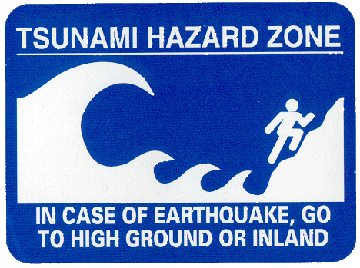
Earthquakes
Earthquakes are vibrations produced by the rapid release of energy from rocks that rupture because they have been subjected to stress beyond their limit.
Everyone know that breaks/fractures in rock are called faults and earthquakes happen along faults. When the rock breaks, it elastically rebounds.
The geographic location on the surface above where an earthquake occurs is called the epicenter.
The location of the actual break in the rock is called the focus.
Sometimes a small cliff called a fault scarp marks the location of an earthquake, and sometimes there is no evidence of a fault at all.
A devastating earthquake may last only a few tens of seconds and can come without warning. Or there may be small earthquakes preceding the big one, called foreshocks. Afterwards aftershocks may occur.
There are two main types of seismic waves created by an earthquake, 1) surface waves that travel along the surface and 2) body waves that travel through the earth's interior. A thrird less important type of wave is the Love wave.
Body waves are of particular interest to geologists because they can be used to pinpoint the location of an earthquake. Primary waves called P-waves push and pull their way through the earth like a slinky. They are faster than secondary waves.
Primary waves can pass through both solids and liquids. While secondary waves are stopped by liquids. Because secondary waves are stopped by liquids and they don't pass through the outer core, we believe the outer core is a liquid metal.
Anyway, since P-waves travel faster than S-waves they arrive first at a seismograph and the difference between the arrival times of the two waves can be used to find the distance of the seismograph from the epicenter of a quake.
Triangulation using three stations is then necessary to fix the location of the epicenter.
Then an assessment of intensity and magnitude is made. The magnitude of an earthquake is given on the Richter Scale. The Richter magnitude defined by measuring the amplitude (crest to trough height) of the largest wave recorded by a device called a seismograph. The Richter scale is not arithmetic, each 1 point raised on the Richter Scale corresponds to a 30-fold increase in released energy, so that a magnitude 2 on the scale is 30 more powerful than a 1, and a 3 is 30x30 or 900 times more powerful than a 1. The most powerful earthquake magnitude recorded was a 8.6, and this corresponded to the explosion of a billion tons of TNT.
Another scale used to describe earthquakes is the Mercalli Intensity Scale, created by Giuseppe Mercalli in 1902. His scale is based on the destruction and effects caused by an earthquake, such as Magnitude VI, felt by everyone, many become frightened and run outside; or Magnitude XII, Damage total, waves seen on ground surface, objects thrown into air.
It is important to be able to locate the epicenter because seismic sea waves may be generated in the ocean. Tsunami have killed 10s of thousands.

Tsunamis and building collapse are probably the most direct dangers. Other dangers are fire, loss of electricity and water.
Physical damage is worst on unconsolidated soft sediments. Here swaying can be very intense, as in Mexico City where soft lake clay is present. Landfill areas near water can be extremely dangerous be cause of liquiefaction, which can take place sediment turns to quicksand.
Solid bedrock such as that underlying Manhattan is good for building, but the island could be isolated if an earthquake destroyed bridges and tunnels. So far, the most powerful earthquake in the city was a magnitude 5 near Jamaica Bay.
For more information visit: or
![]() National Earthquake Information Center
National Earthquake Information Center
or
![]() List of largest Earthquakes in U.S.A.
List of largest Earthquakes in U.S.A.
 Click here to
return to the Class Website
Click here to
return to the Class Website
![]() Click here to
visit our publisher's website
Click here to
visit our publisher's website